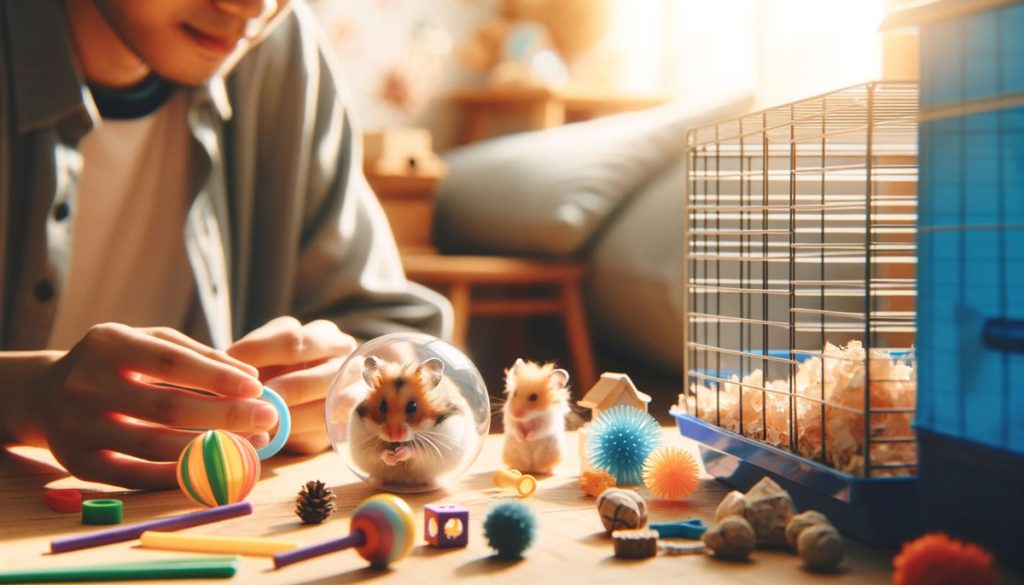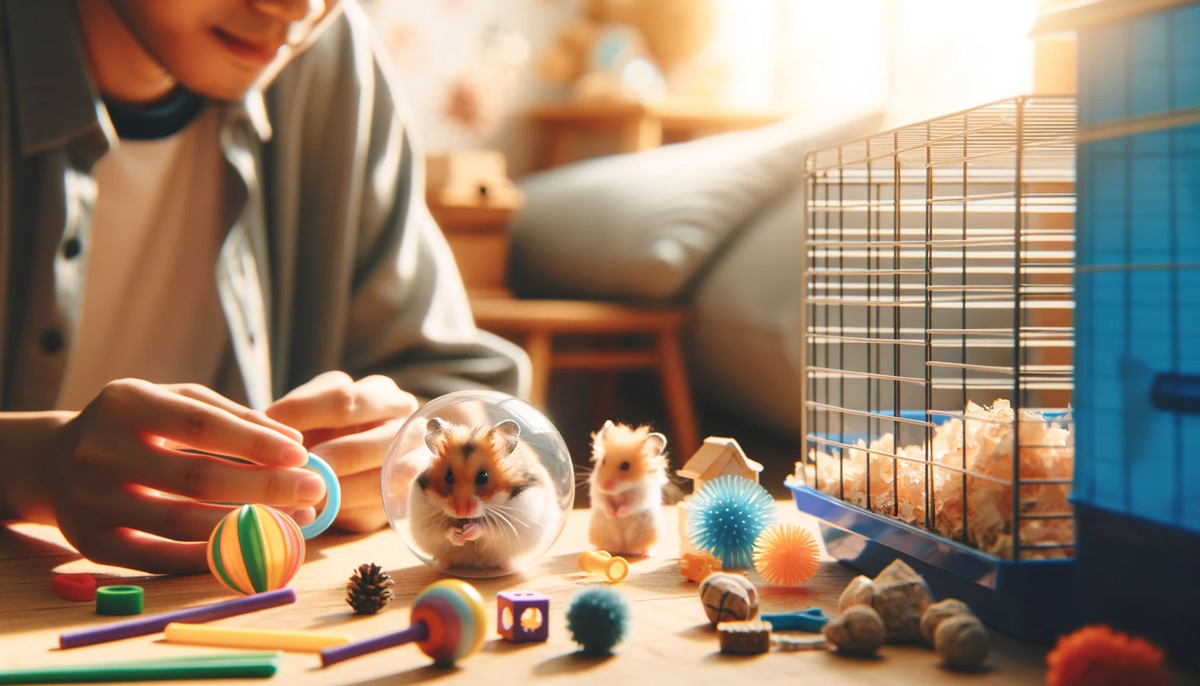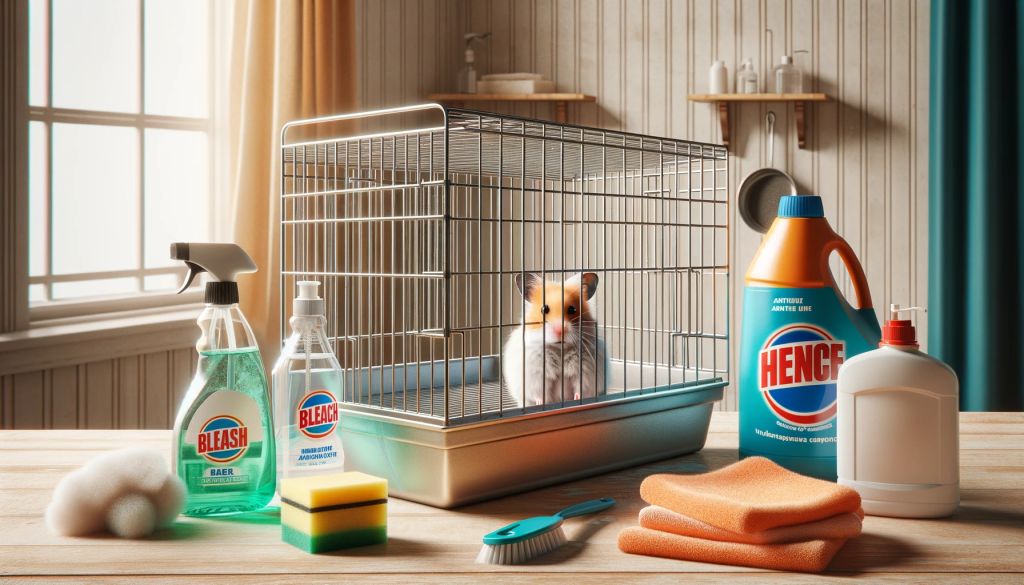If you have a skittish hamster, there are effective approaches to help it become more docile. Young hamsters or those recently brought home may exhibit nervousness. Typically, they need a few months to acclimate to their new surroundings and unfamiliar humans.

How do you calm a skittish hamster?
You can soothe your pet using techniques like the plastic tub or ball method, offering favorite treats, interactive play, and gentle conversation. It’s crucial to first ensure the hamster feels at ease in its habitat.
Younger hamsters are usually more receptive to taming efforts than their older counterparts, although with patience, even mature hamsters can learn to trust.
Calming a skittish hamster involves a blend of consistent practice and patience, eventually transforming them into affectionate companions. This guide aims to alleviate concerns about taming your skittish hamster with practical advice.
Creating a Comfortable Living Space for Your Hamster
The initial step in taming your hamster is to provide a spacious, multi-level cage that’s comfortable and stimulating, preferably wooden, to facilitate interaction and familiarity with humans and potential other pets. Ensure the cage is open-top to allow your hamster to hear and become accustomed to household sounds.
Incorporating Playthings in the Habitat
Keeping your hamster engaged with toys not only sharpens its mind but also helps reduce its anxiety. Include toys that promote interaction, like balls and tunnels, to encourage activity and human interaction.
Introducing the Ball Method
Once your hamster has settled, begin interacting with it by talking and offering treats. At first, the hamster may be timid, but with encouragement and patience, it will learn to explore within a ball, returning to its cage when necessary. Be patient as trust is built gradually, and eventually, the hamster will be more receptive to your presence and touch.
Utilizing a Plastic Tub
Use a large plastic tub filled with bedding and toys to create a secure environment for your hamster. Introduce your hands slowly, allowing the hamster to retreat if scared, and repeat until it feels comfortable with your presence.
Offering Nutritious Treats
Providing a diet of pellets, vegetables, and fruits suitable for omnivorous hamsters is essential. Be cautious with citrus or acidic foods that can upset their stomach. Introduce food gently without startling your pet, allowing it to become accustomed to you as the provider.
Engaging in Play
Allow your hamster to roam and explore outside the cage. Initially, give it space to become secure in your presence before gradually joining in its play with familiar toys, building up to direct interaction.
Ensuring Clean Hands
Hamsters rely heavily on their sense of smell. Always wash your hands before handling your hamster to eliminate any scents that may cause distress, including those of other animals.
Communicating with Your Hamster
Regularly speaking to your hamster in a calm, soothing voice will help it get used to you and reduce its anxiety, facilitating easier handling and interaction.
Handling with Care
When you begin to handle your hamster, do so gently to convey safety and trust. Avoid disturbing your hamster during its rest, as this could lead to stress or aggression.
Timing Your Taming Sessions
The optimal time to work on taming your hamster is when it’s naturally awake and active, usually in the evening or night. Avoid disturbing its sleep cycle and allow it to complete its routines before attempting taming sessions.
Remember, allowing your hamster to adjust to its environment and your presence is key before starting the taming process. Spend time near its cage to help it grow accustomed to you, paving the way for successful taming when the hamster feels relaxed and secure.



